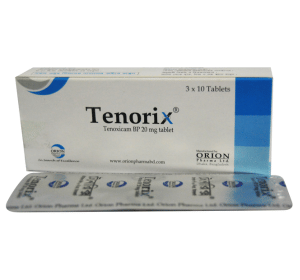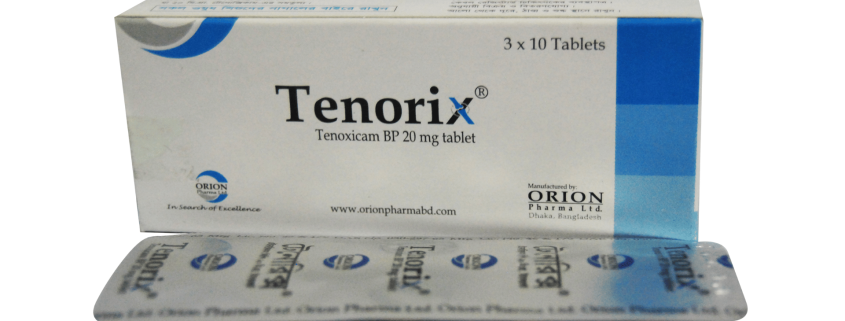TENORIX

NSAIDs : Tenoxicam
Indication
Tenorix is indicated for the symptomatic treatment of rheumatoid arthritis, osteoarthritis, ankylosing spondylitis, acute gout, tendinitis, bursitis, periarthritis of the shoulders or hips, post-operative pain and primary dysmenorrhea.
Contraindication
Tenoxicam is contraindicated in patients who have shown hypersensitivity to the drug.
Dosage & Administration
For all indications (except primary dysmenorrhea, post-operative pain and acute gout) the usual recommended dose is 20 mg once daily.
Usual : 20 mg once daily
Primary dysmenorrhea : 20 to 40 mg once daily
Post operative pain : 40 mg once daily
Acute attacks of gout : 40 mg once daily for two days followed by 20 mg once daily for a further five days
Side Effect
Tenorix is well tolerated in the recommended doses. The usual side effects are mild and transient gastric & abdominal discomfort, dyspepsia, heartburn, nausea, dizziness, headache, itching, erythema, rash, urticaria, increase in BUN or creatinine, edema and palpitations. In isolated cases GI-perforation, asthma, angioedema and elevated blood pressure may occur.
Drug Interaction
Concurrent treatment with salicylate or other NSAIDs should be avoided because of increased risk of undesirable reactions. Co-administration of Tenoxicam and Methotrexate has been associated with reduced renal tubular secretion of methotrexate. As with NSAIDs in general, Tenoxicam should not be administered concurrently with potassium sparing diuretics. Tenoxicam might attenuate the antihypertensive effects of a-adrenergic blockers and ACE-inhibitors. It may also enhance the effect of antidiabetic drug (sulphonylurea group).
Presentation
Tenorix Tablet: Each box containing 3×10 tablets in blister pack.



